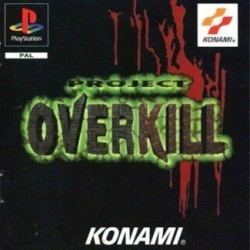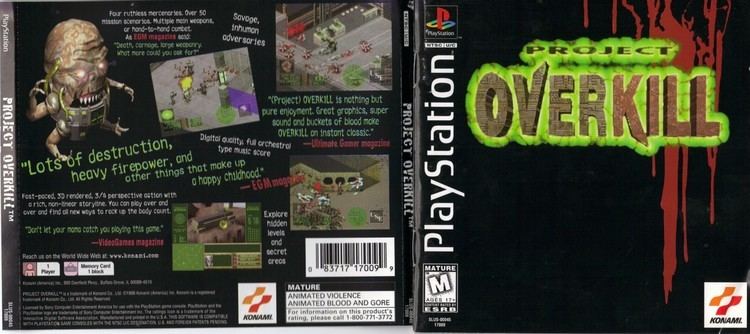7.6 /10 1 Votes
5/5 Emuparadise | 5/10 IGN Initial release date 31 August 1996 Publisher Konami | |||||||||||||||||||||||||||||||||
 | ||||||||||||||||||||||||||||||||||
Similar Project: Horned Owl, Steel Harbinger, Contra: Legacy of War, Colony Wars, Crypt Killer | ||||||||||||||||||||||||||||||||||
Cgrundertow project overkill for playstation video game review
Project Overkill is a shoot 'em up game developed and published by Konami in 1996.
Contents
- Cgrundertow project overkill for playstation video game review
- Classic game room project overkill review for playstation
- Gameplay
- Plot
- Soundtrack
- References
Classic game room project overkill review for playstation
Gameplay
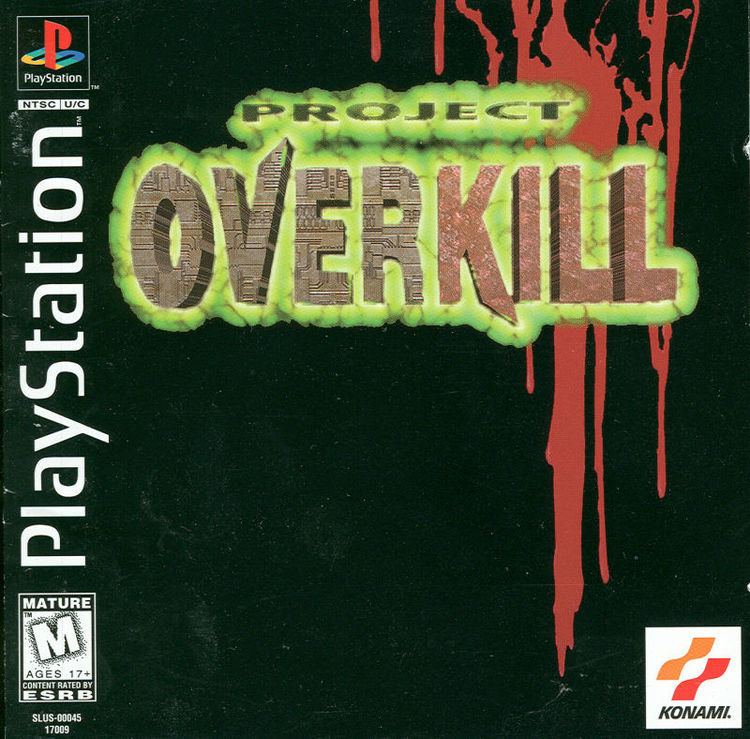
The gameplay takes on a 3D-esque isometric view, in which the player chooses one of four mercenaries to lead through the levels. The characters act as lives, and if one were killed, the player still has the choice among the remaining mercenaries (rather than having multiple lives for one character). In the levels, the player must find key-cards, destroy guards, aliens, and robots, activate laser bridges, to complete an objective. Objectives include finding the exit to the level, assassination of an officer, escorting a defect or other important official, retrieving an item (usually a memory chip or the like), or obtaining a certain percentage of kills in the area.
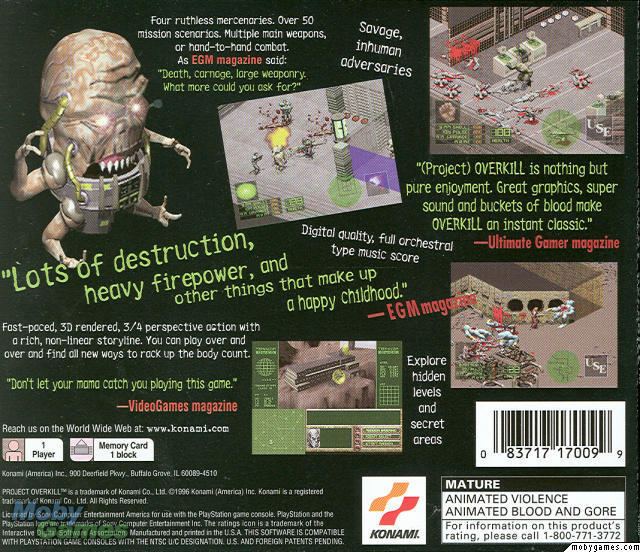
The four characters available to the player are for the most part alike, but each have key differences that make them noticeably set apart from the rest. For example, the large alien, Quogg, has a melee attack that will kill the standard human troops in just one hit (rather than the two required from the other characters). Also, each character has slight variations in weaponry that make for somewhat different combat experiences.
Plot
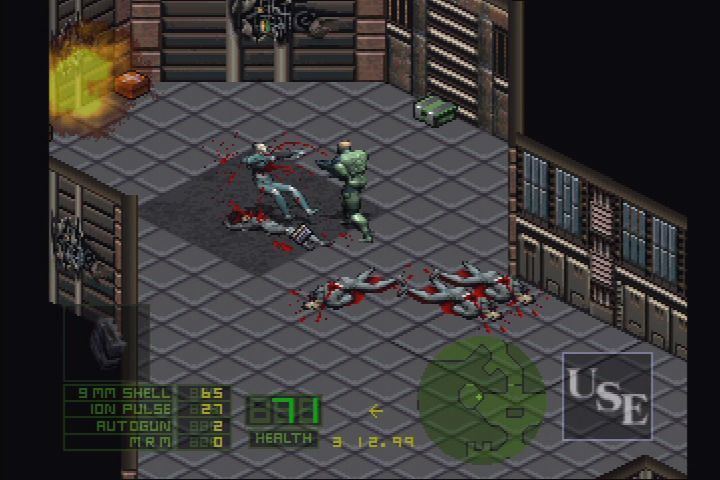
The plot of the game revolves around a group of four mercenaries hired by a group to eliminate the presence of a group of humans called the Viscerians from a planet. The player completes many missions finally defeating the emperor in the final mission of the game.
Soundtrack
The soundtrack was written by Mark Yoshimoto Nemcoff.
